
Design elements to rejuvenate Indian Streets: A case of Bellasis Road, Mumbai
Streets in the last century were primarily designed as a mode of transport for goods and services. This automobile-centric approach of street design stifled the human accessibility aspect, and eventually, cities forgot that every citizen is a pedestrian at some point in a day. But this scenario is changing, and cities globally are leading the movement to reinvest in their streets with a focus on pedestrian environment.
Mumbai is a city of pedestrians, with 51% of the total daily trips being walk trips, according to the April 2016 edition of the Comprehensive Mobility Plan of Greater Mumbai. Taking this into account, the Municipal Corporation of Greater Mumbai (MCGM) joined the global movement to improve pedestrian experience in August 2018, and announced the redesigning of Bellasis Road, a stretch between Nagpada and Mumbai Central Junction, in Byculla’s neighbourhood, to make it a ‘model street’. Following a series of consultations with stakeholders including institutions, vendors and the general public, the redesigning of this road is currently underway. The proposed new design complies with the national road safety standards, while safeguarding the vibrancy and local identity of the street.
Existing road condition
Originally built in 1793, Bellasis Road is an 823-meter-long street, stretching between Nagpada Junction and Mumbai Central Station Junction. The street is an important east-west urban connector, with ground floor retail frontage along the corridor, which generates high pedestrian and vehicle volumes every day. The common issues observed on this road included lack of walkable footpaths, vehicular congestion, bottlenecks, multiple layers of street side parking and poor pedestrian crossing infrastructure.
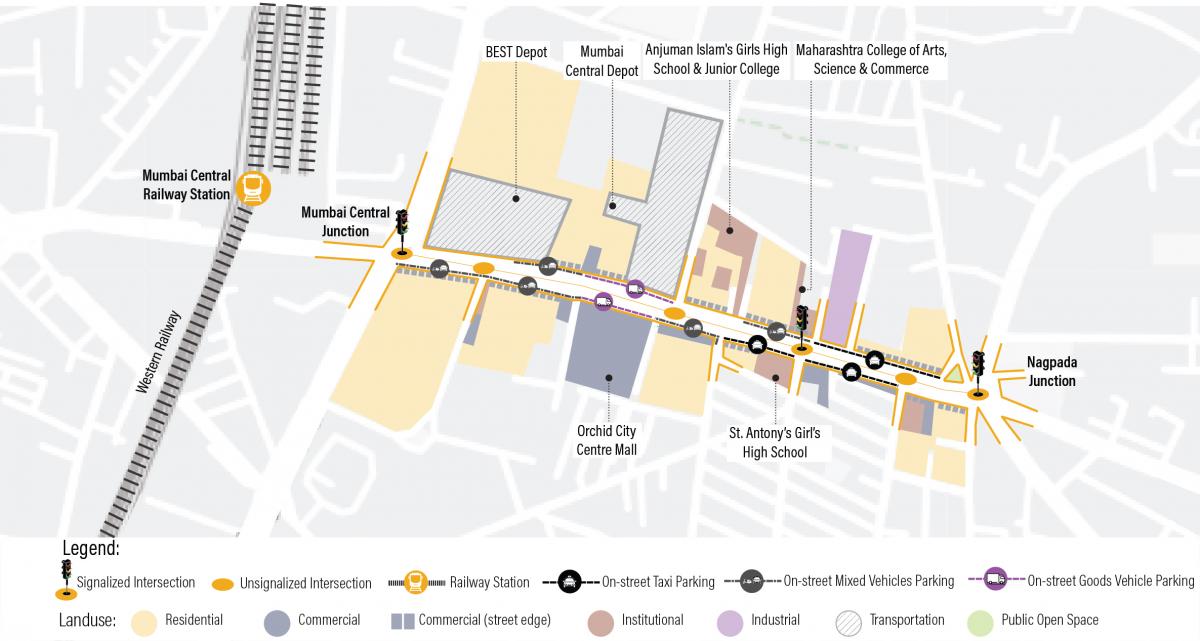
During a road safety audit conducted on Bellasis Road recently, a pedestrian environment data scan (PEDS) showed that most of the pedestrians use footpath despite its less-than-ideal condition. The haphazard placement of bus stops, utilities, shop extensions, vendors, planters, etc., reduced the walkable space on the footpath. Unorganized parking was another obstacle that every pedestrian had to negotiate. Along with the absence of safe pedestrian crossings, Bellasis Road was indeed every pedestrian’s nightmare.
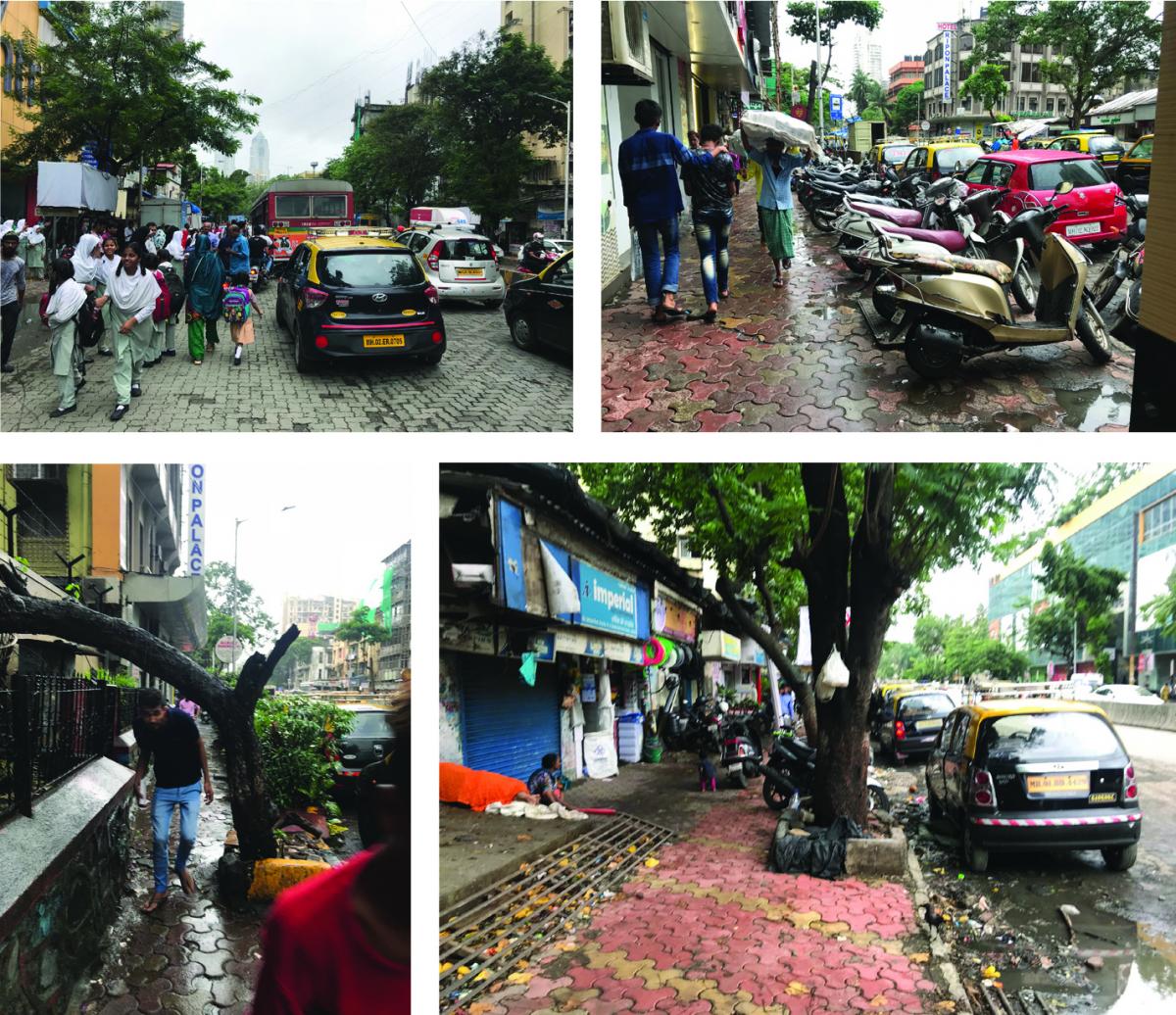
Proposed Design and Design Elements
The proposed design of Bellasis Road included the following principles:
- Maintaining contiguous vehicular traffic lanes: two lanes on each side
- Creating multi-utility/parking zones all along the street
- Introducing continuous footpaths
- Introducing protected pedestrian crossings
- Introducing ‘placemaking’ to manage the footpaths
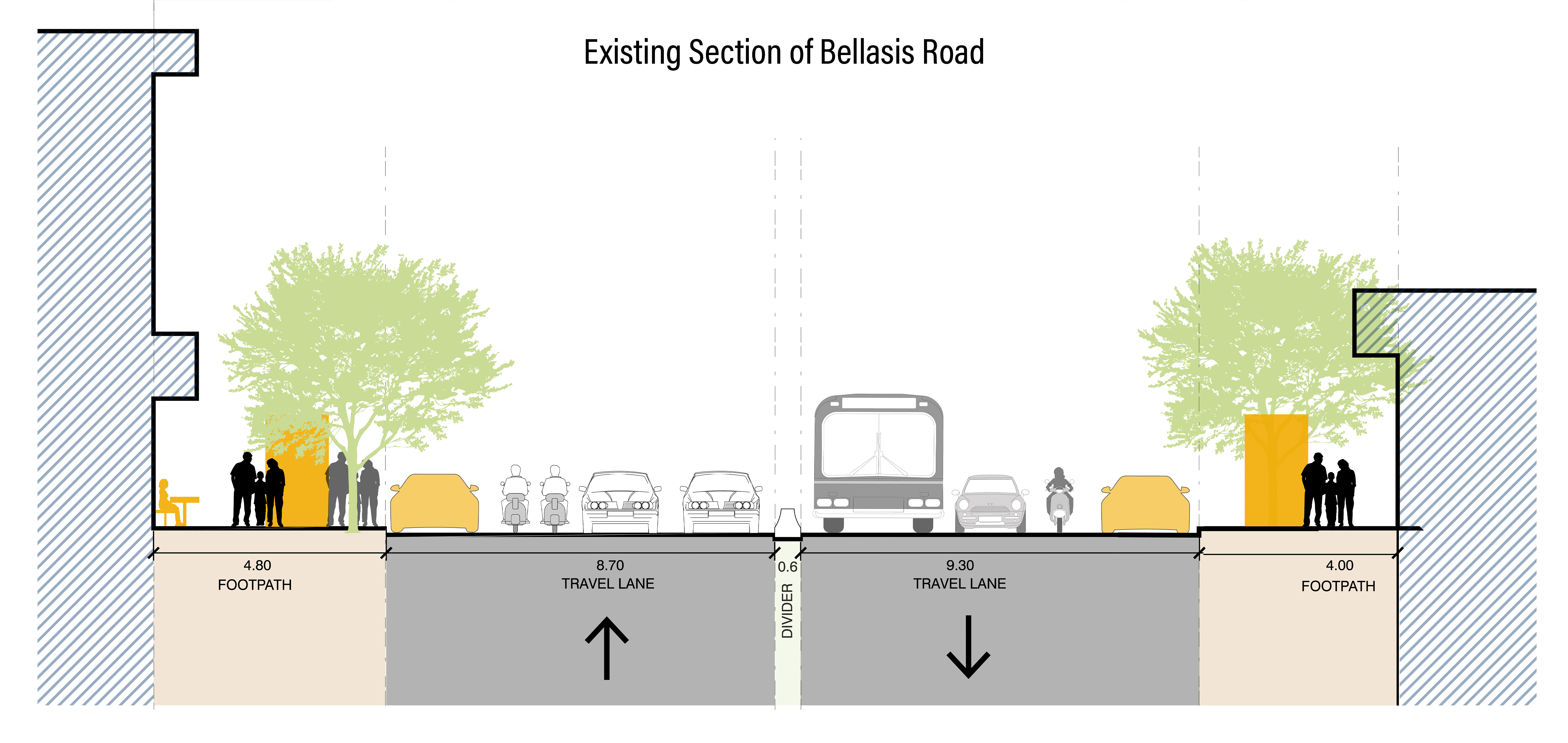
Following these principles in the new design, existing median alignment was retained and the effective carriageway of two lanes each side was maintained. The space left between the carriageway and footpath was further analyzed based on the adjoining land-use to determine the quality of pedestrian environment on the road. For example, at the stretch where schools are, it became waiting/pick-and-drop zone while at the mall, it became parking zone and at smaller retail shops it became two-wheeler parking zone.
Towards the street frontage, a clear walking zone was identified to increase walkability and eliminate pedestrian-vehicular conflicts on the street. To facilitate this, shifting of certain above ground utility boxes, bus stops, etc., was recommended.
These proposed changes to the Bellasis Road design are based on three chief design elements: curb extensions, refuge islands and multi-utility zones. Modules for these elements were developed keeping the adjoining land-uses, pedestrian walkability and safety as a priority. How are these elements expected to rejuvenate the street?
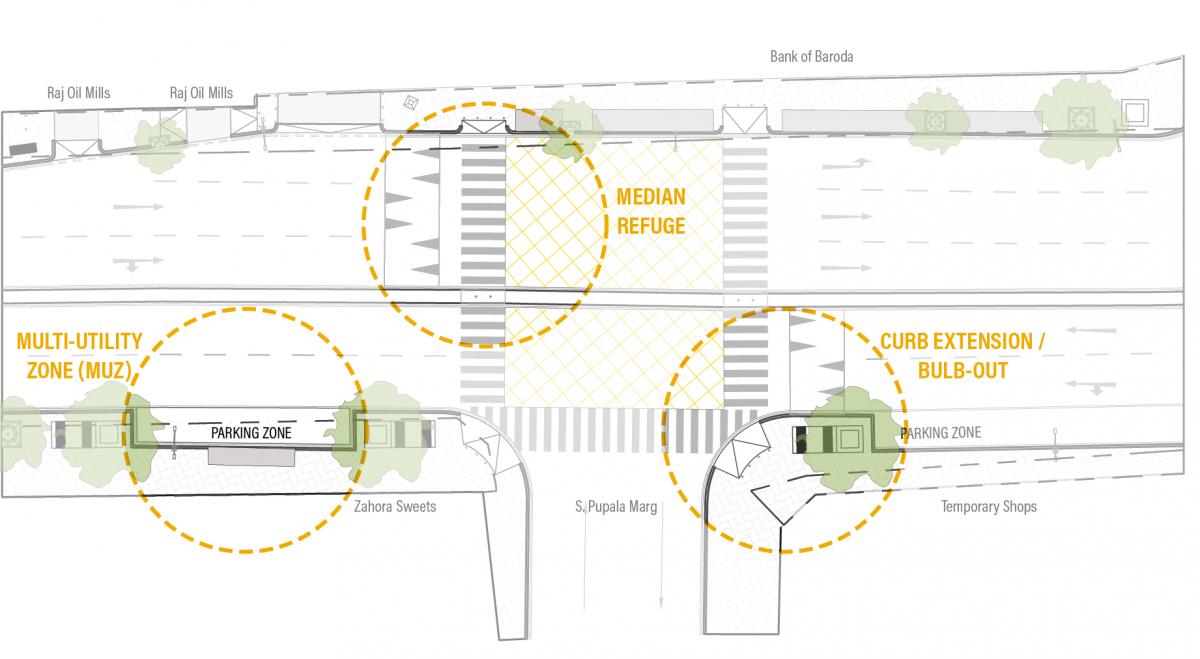
1. Curb Extensions (Bulb-Outs)
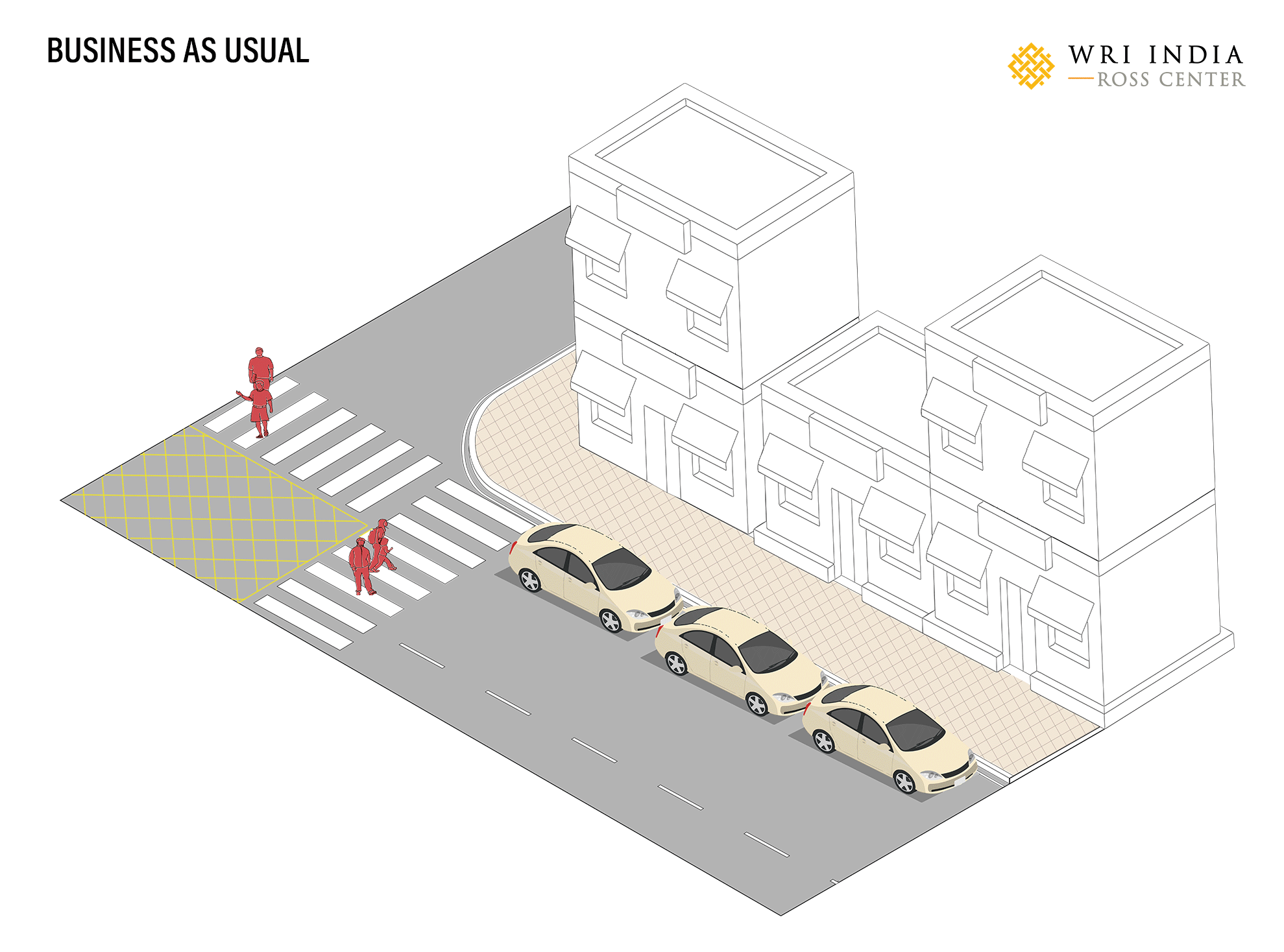
A curb extension, known as a bulb-out, is a footpath extension at strategic locations to reduce pedestrian crossing distance and control their exposure to the moving vehicles. Curb extensions also increase the pedestrian and driver’s visibility towards each other and act as a traffic calming measure.
On Bellasis Road, at locations where street side parking obstructed the pedestrian crossings, curb extensions have been suggested. The space required for one such extension would be no more than the space taken by one parked car. At corners, curb expansions would allow extra space to introduce good quality place making and creating identity of the street.
Evidence from Latin American cities show that the chance of vehicle collisions and pedestrian crashes decrease by 6% for every one-meter decrease of pedestrian crossing distance. Curb extensions also help to tighten intersection radii and encourage slower turning speeds. Introducing curb extensions result in 2-8 kmph speed reduction for residential collector roads, which are moderate-capacity roads that move traffic from local streets to arterial roads.
2. Pedestrian Refuge Islands
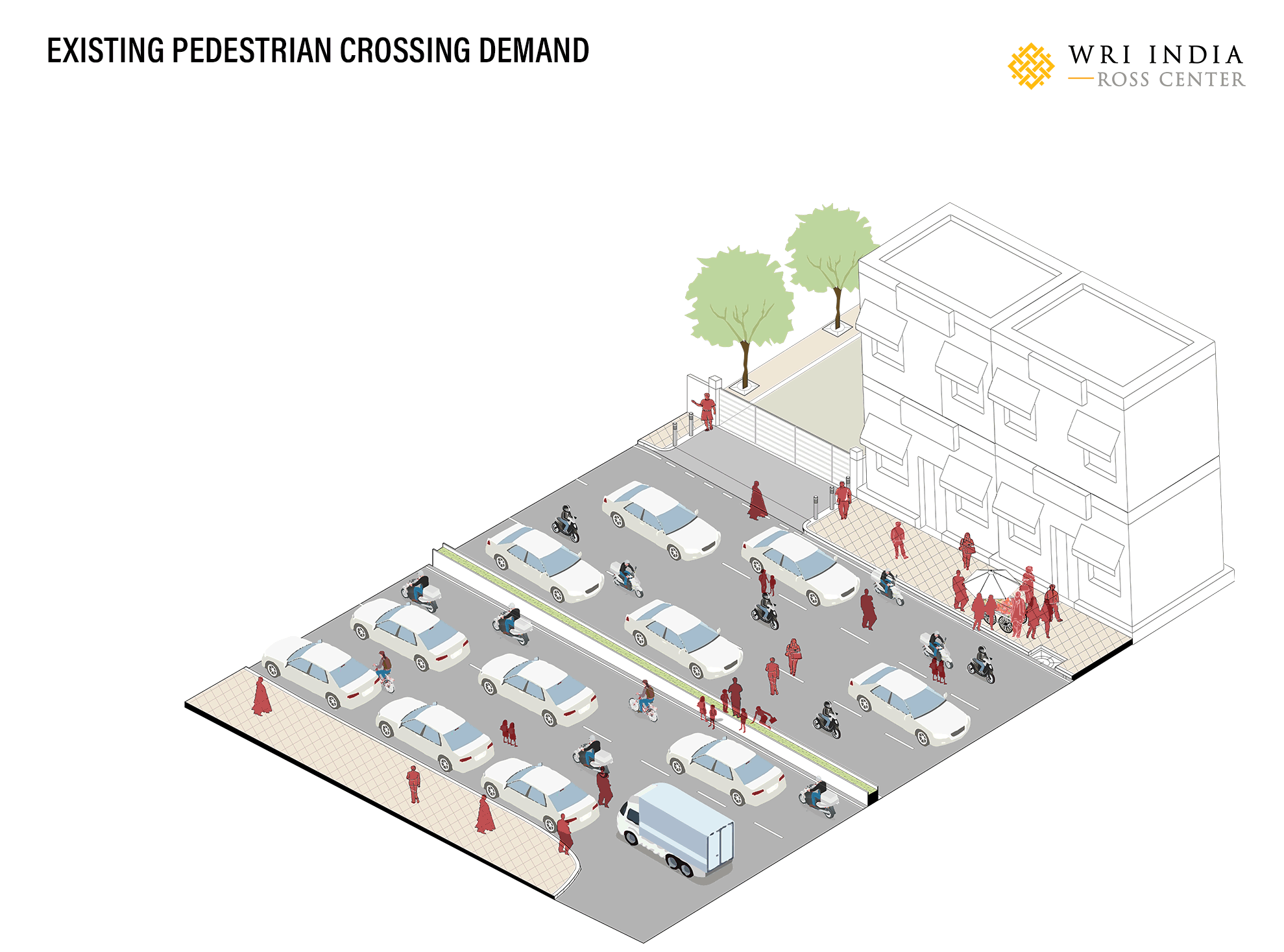
A pedestrian refuge island is a paved portion in the median of the street, where pedestrians can stop and wait while crossing. While refuge islands may be used on both wide and narrow streets, they are generally applied at loca¬tions where speeds and volumes make crossings prohibitive. In the case of Bellasis Road, median refuge islands will be used where pedestrians need safe harbor after crossing one direction of traffic and before starting the other.
Globally, providing raised medians or pedestrian refuge areas have reduced pedestrian crashes by 46% and 39% on marked and unmarked crosswalk locations, respectively.
3. Multi-Utility Zones
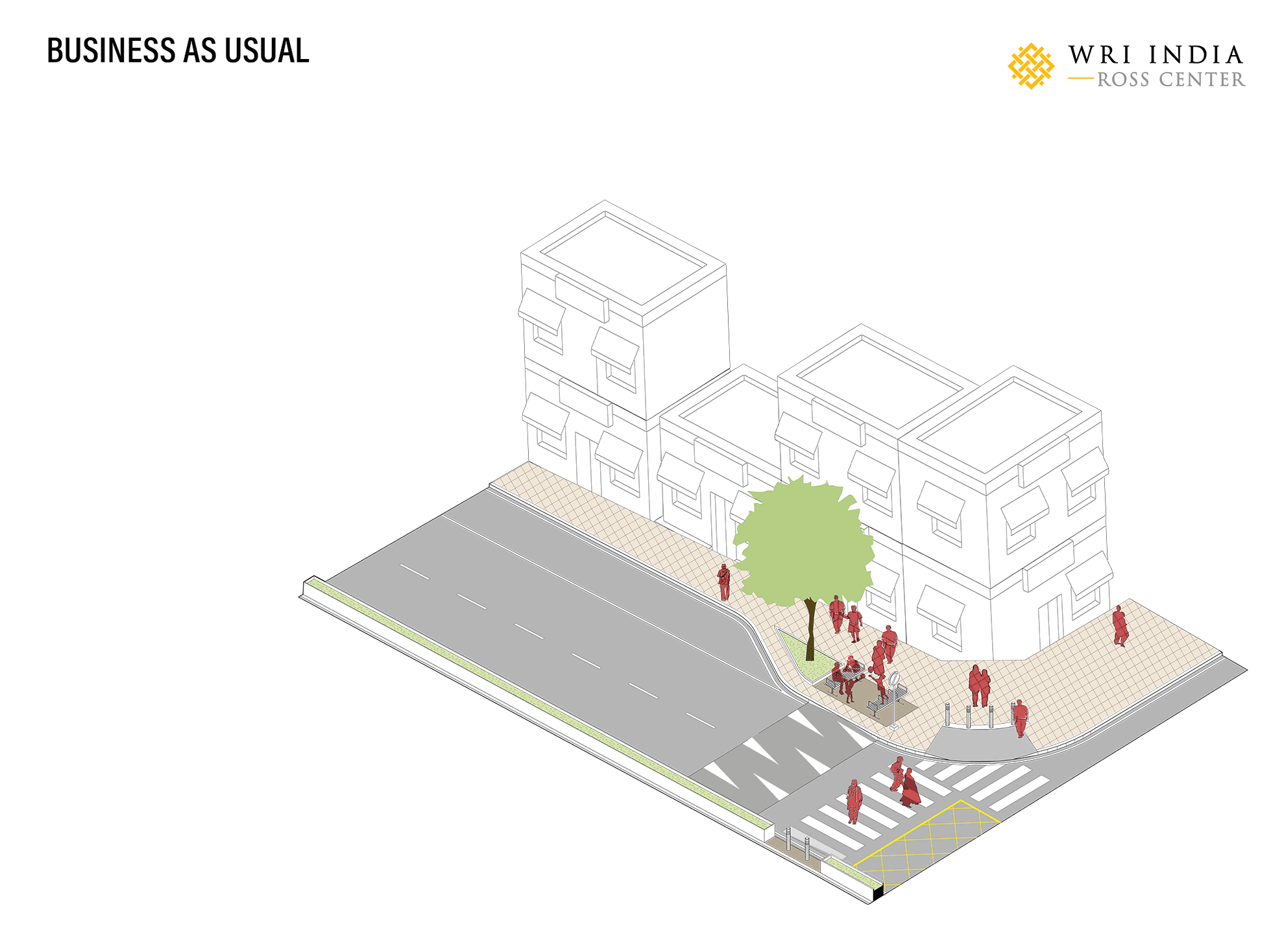
Multi-utility zone (MUZ) is the footpath area allocated for various utilities necessary for the functioning of a street, such as vendors, public seating, landscaping, bus bays, parking, utility boxes, streetlights, signage etc. Provision of MUZs ensure that adequate clear walking space is available while accommodating ancillary activities within the footpath area. MUZs are best suited for neighborhood streets with mixed land-use, where multiple activities are present.
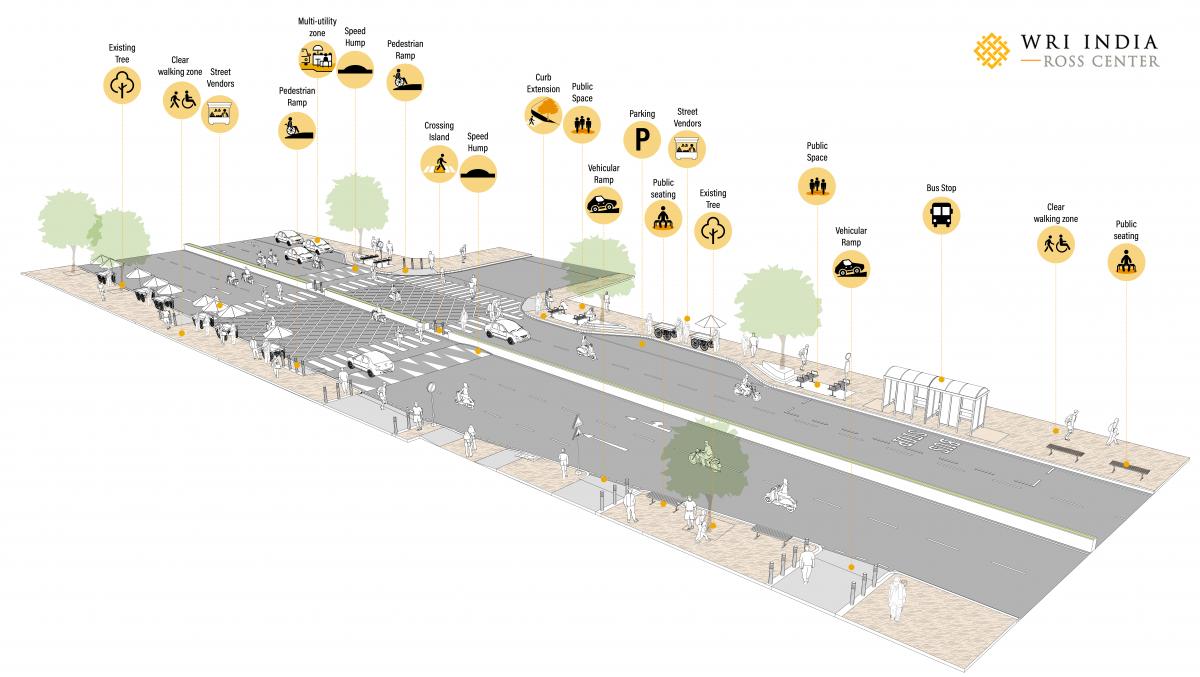
Bellasis Road is known for its street side everyday informal activities. An organized space along the street for these activities will help to maintain the character of the street as well as smoothen the pedestrian and vehicular movement.
Strategic design for safer roads
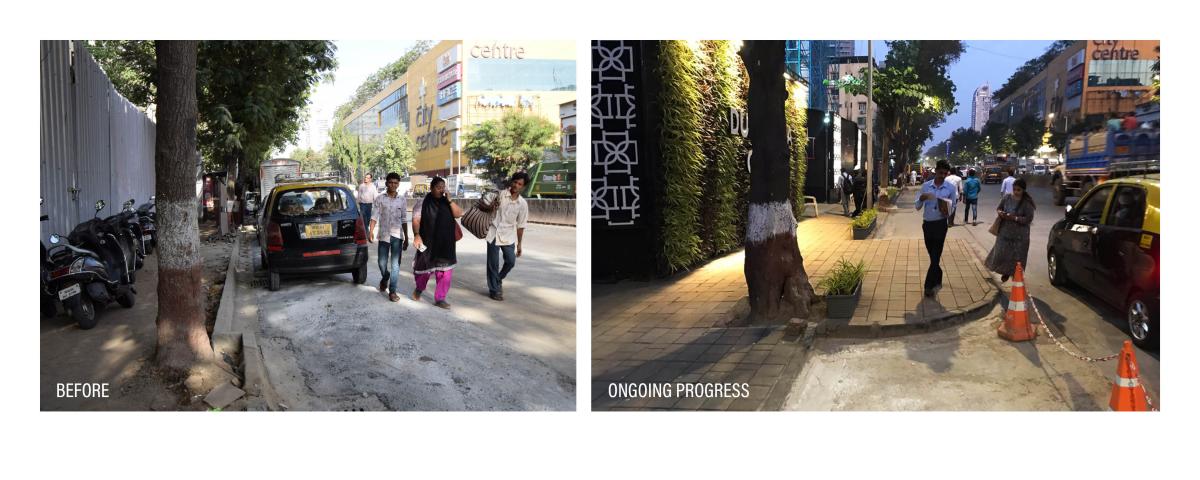
Safe walkable streets are fundamental components for any city. Today, the issues faced by pedestrians in Bellasis Road are common to people in almost every urban street in India. Bellasis Road is an embodiment of a typical Indian street, with its varied land-uses generating a plethora of street activities, jostling shoulder-to shoulder with traffic. When designed strategically, these multiple elements can contribute to a safer environment for vulnerable road users, and help establish vibrant, mixed-use public spaces while ensuring smooth vehicular flow.
The Sustainable Cities program at WRI India’s Ross Center, was the knowledge and implementation partner of MCGM for the intersection redesign project, under Bloomberg Philanthropy’s Initiative for Global Road Safety.